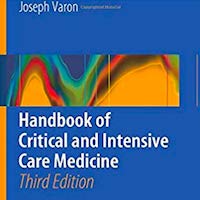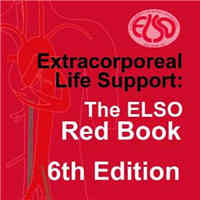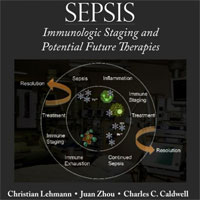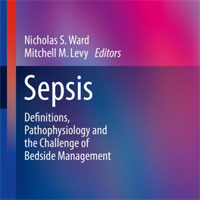Tag: monitoring
Best Practice Advisories Improve Sedation Protocol Compliance in the ICU
Best practice advisories can be effectively used in ICUs to improve sedation protocol compliance and may mitigate potential propofol-related hazardous conditions. Best practice advisories should undergo continuous quality... read more
Fully Automated, Real-time, Calibration-free, Continuous Noninvasive Estimation of Intracranial Pressure in Children
This nICP estimation algorithm, based on arterial blood pressure (ABP) and bedside transcranial Doppler (TCD) cerebral blood flow velocity (CBFV) waveform measurements, performs in a manner comparable to invasive intracranial... read more
Intracranial Pressure & Neuromonitoring XVI
This book introduces the latest advances relating to the pathophysiology, biophysics, monitoring and treatment of traumatic brain injury, hydrocephalus, and stroke presented at the 16th International Conference on Intracranial... read more
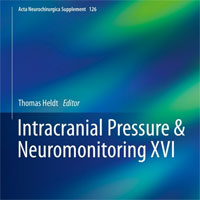
Prognostic Value of Spreading Depolarizations in Patients With Severe TBI
In this cohort study of patients with acute brain trauma, spreading depolarizations were predominant but heterogeneous and independently associated with poor neurologic recovery. Monitoring the occurrence of spreading depolarizations... read more
Seizure Detection Algorithms in Critically Ill Children
Some commercially available seizure detection algorithms demonstrate performance for seizure detection that is comparable to that of electroencephalography experts using quantitative electroencephalography displays. Continuous... read more
Nonoperative Management of Splenic Injury of Patients with Reduced Consciousness is Safe and Feasible in Well-equipped Institutions
This study shows that NOM for blunt splenic trauma is a viable treatment modality in well-equipped institutions, regardless of the patients mental status. However, the presence of neurologic impairment is associated with... read more
Mechanical Ventilation in Patients with Acute Ischemic Stroke
Although there are no specific data regarding the effect of respiratory management on stroke patients' outcomes, specific ventilator strategies in this population could potentially improve neurologic outcome and prevent respiratory... read more
Conditional Survival With Increasing Duration of ICU Admission
This is an observational study of three intensive care databases two in the United States (Medical Information Mart for Intensive Care III and electronic ICU) and one in United Kingdom (Post Intensive Care Risk-Adjusted Alerting... read more
Risk for Mortality in Critically Ill Children Needing RRT
Margaret M. Parker, MD, MCCM, speaks with Danny Hames, MD, on his article titled "Risk Factors for Mortality in Critically Ill Children Requiring Renal Replacement Therapy" published in the November 2019 issue of Pediatric... read more
Incidence of Hypoglycemia in Following Insulin‐based Acute Treatment of Hyperkalemia
Iatrogenic hypoglycemia, as a result of treatment for hyperkalemia, is a common occurrence. Hyperkalemia occurs disproportionately in patients with acute kidney injury or end‐stage renal disease, and these patients are... read more
Pulmonary Embolism Hospitalization, Readmission, and Mortality Rates in US Older Adults
Over the past 15 years, advances have occurred in the diagnosis and management of pulmonary embolism (PE).1 Computed tomographic pulmonary angiography (CTPA) is now the routine diagnostic test. The availability of risk... read more
Hemodynamic Monitoring – The Why, When, Which and What
Although the need to properly assess and monitor the hemodynamic status of a critically ill patient appears self-evident, the plethora of information in the published literature over the past two decades has resulted in complexity... read more
Echocardiographic Assessment of LV Diastolic Pressure
The ever-increasing trend toward noninvasive monitoring puts echocardiography at the forefront and considerable effort has been made to define its role in this setting. Invasive pressure measurement is the only accurate... read more
Ultrasound for Lung Monitoring of Ventilated Patients
In the intensive care unit, patient lung ultrasound provides accurate information on lung morphology with diagnostic and therapeutic relevance. It enables clinicians easy, rapid, and reliable evaluation of lung aeration and... read more
Essentials of Mechanical Ventilation
The acclaimed application-based guide to adult mechanical ventilation, updated to reflect the latest topics and practice guidelines. This practical guide is written from the perspective of authors who have nearly 100 years'... read more
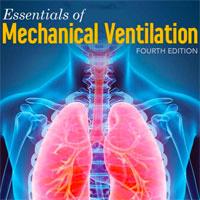
Hemodynamic Monitoring in the ECMO Patient
Hemodynamic monitoring in extracorporeal membrane oxygenation (ECMO) patients requires familiarity with the underlying pathophysiology and circulatory mechanics of extracorporeal flow. This review discusses the various monitoring... read more
Transcutaneous CO2 vs. End-tidal CO2 in Neonates and Infants Undergoing Surgery
EtCO2 underestimates PvCO2 values in neonates and infants under general anesthesia. TcPCO2 closely approximates venous blood gas values, in both the NICU and non-NICU samples. We, therefore, conclude that tcPCO2 is a more... read more
How and Whom to Monitor for Seizures in an ICU
Prevalence of seizures detected by continuous electroencephalography was significantly higher than with routine electroencephalography. Prevalence was particularly high in post convulsive status epilepticus, CNS infection,... read more
How to Deal with Severe Acute Pancreatitis in the Critically Ill
Management of severe acute pancreatitis (SAP) is multimodal with emphasis on monitoring, adequate fluid resuscitation, avoiding prophylactic use of antibiotics, cause-directed procedures or treatment, and organ support. There... read more
Defining Sepsis on the Wards
The aim of this study is to look at the prevalence (commonness) of sepsis across acute hospitals (hospitals with an emergency department) across Wales using the currently used and new definitions of sepsis. Sepsis is a major... read more
Impact of Mean Arterial Pressure Fluctuation on Mortality in Critically Ill Patients
The purpose of this study was to investigate the association between mean arterial pressure fluctuations and mortality in critically ill patients admitted to the ICU. The reduced mean arterial pressure fluctuation (within... read more
Loss of Sphingosine 1-Phosphate in Septic Shock is Predominantly Caused by Decreased Levels of HDL
Sphingosine 1-phosphate (S1P) is a signaling lipid essential in regulating processes involved in sepsis pathophysiology, including endothelial permeability and vascular tone. Serum S1P is progressively reduced in sepsis patients... read more




